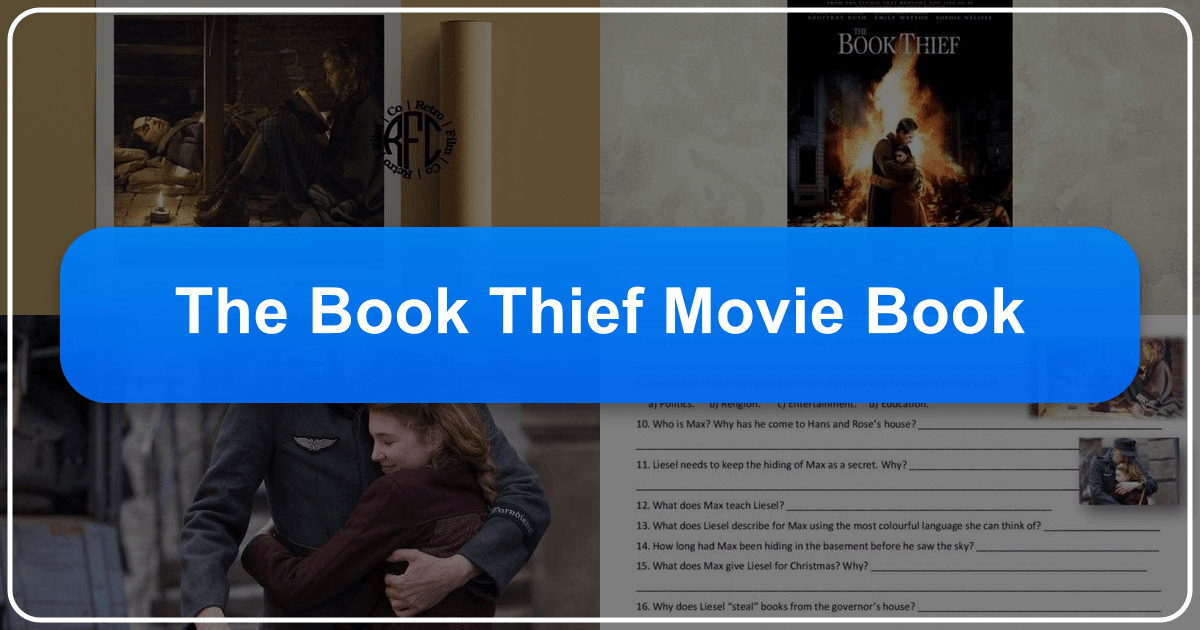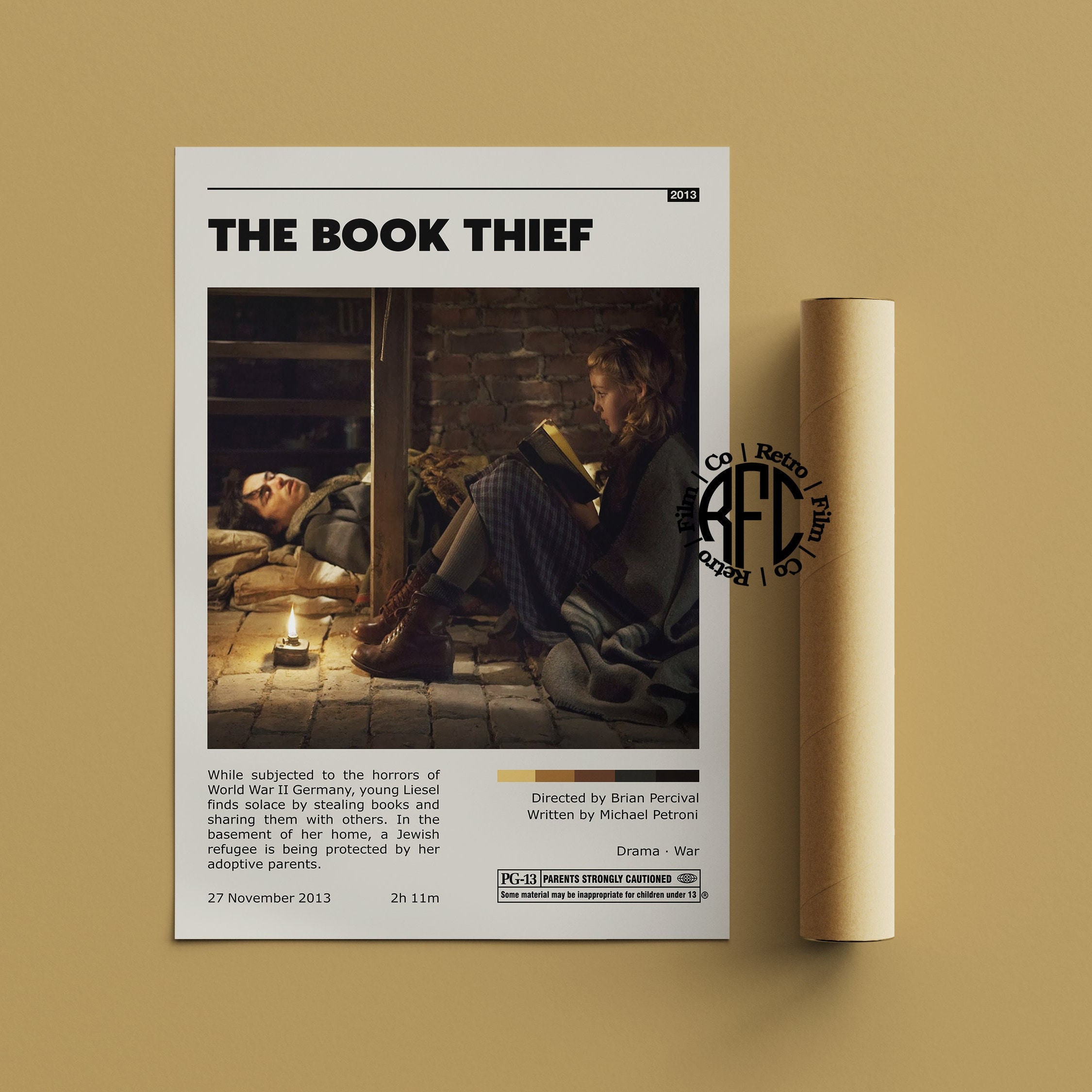The Book Thief: A Comparative Analysis of the Book, Movie, and Their Cultural Impact

The Book Thief, Markus Zusak’s poignant novel set against the backdrop of Nazi Germany, has captivated readers worldwide. Its subsequent adaptation into a film further cemented its place in popular culture. This article delves into a comparative analysis of the book and movie, examining their key themes and exploring their enduring literary and cinematic impact across various aspects. We will use the lens of several key topics to understand the work’s resonance: books, authors, reading and learning, libraries, and cultural impact.
1. Books: Genre, Themes, and Literary Style
1.1 Genre and Themes: Both the book and movie firmly belong to the genres of historical fiction and war drama. Zusak’s novel, however, transcends simple genre classification. It’s a coming-of-age story, exploring Liesel’s journey from a traumatized child to a resilient young woman. The central themes interwoven throughout are the power of words and stories, the enduring strength of the human spirit in the face of adversity, and the complexities of morality during wartime. While the movie captures these themes, the novel’s exploration is deeper and more nuanced, offering a rich tapestry of emotions and philosophical reflections.

1.2 Narrative Voice and Structure: A defining element of Zusak’s novel is the unique narrative voice of Death himself. This unconventional choice adds a layer of profound introspection and emotional distance to the narrative, allowing for both the depiction of horrific events and moments of unexpected humor and tenderness. The film retains Death as a narrator, voiced by Roger Allam, yet this crucial element loses some of its impact in the cinematic translation. The novel’s pacing, deliberate and reflective, allows for a more thorough exploration of Liesel’s internal world and the impact of the war on her psyche. The movie, constrained by its runtime, necessarily streamlines the narrative, sometimes sacrificing depth for brevity.
1.3 Literary Devices: Zusak masterfully employs various literary devices in his novel, including metaphors, symbolism, and foreshadowing, to enhance the narrative’s emotional impact and thematic resonance. Death’s observations serve as a running commentary, enriching the readers’ understanding of human nature and the consequences of war. The film attempts to replicate these elements, but the translation from page to screen often diminishes their power. The visual medium, while capable of conveying some imagery powerfully, struggles with the same subtlety and complexity as Zusak’s written prose.

2. Authors: Markus Zusak’s Vision and the Film Adaptation
2.1 Markus Zusak’s Writing Style: Zusak’s writing is characterized by its lyrical prose, blending profound observations on life and death with a darkly humorous tone. His ability to create vivid imagery and emotionally resonant characters is a hallmark of his style. The film, while attempting to capture the essence of Zusak’s writing, inevitably simplifies the nuances and complexities present in the original text.
2.2 Adaptation by Michael Petroni: The screenplay, written by Michael Petroni, faces the considerable challenge of transforming Zusak’s intricate narrative into a coherent and engaging cinematic experience. Some critics argue that Petroni’s adaptation, while remaining relatively faithful to the source material, sacrifices the novel’s subtle emotional depth for a more streamlined, conventional narrative arc.
2.3 Brian Percival’s Direction: Director Brian Percival’s vision for the film influences its interpretation of Zusak’s novel. He attempts to maintain the emotional core of the story while also adhering to a more conventional cinematic style, perhaps aiming for wider audience appeal. This decision results in a film that, while visually appealing and well-acted, may not fully capture the unique literary and thematic elements of Zusak’s masterpiece.

3. Reading and Learning: Exploring Themes of Literacy and Resilience
3.1 The Power of Words: Both the book and the movie powerfully highlight the transformative power of words and stories. Liesel’s love of books and her act of stealing them becomes a symbol of defiance and hope in the face of oppression. The act of reading and sharing stories provides solace, comfort, and a sense of connection during the dark days of World War II. The book explores this theme more profoundly through internal monologues and detailed reflections. The film emphasizes the act of sharing stories, highlighting its communal impact.
3.2 Educational Value and Life Lessons: The Book Thief offers valuable insights into historical events, the complexities of human nature, and the importance of resilience and empathy. The novel provokes reflection on the devastating consequences of war, prejudice, and the abuse of power. These lessons are present in the film, but the book provides a more in-depth analysis of these crucial themes. The novel encourages readers to grapple with challenging moral questions, fostering critical thinking and emotional intelligence. The film, limited by its format, touches upon these issues but less extensively.
3.3 Reading Habits and Literary Engagement: Zusak’s novel invites close reading and active engagement with the text. The subtle nuances in language and imagery reward attentive readers and encourage further reflection. The film offers a more passive viewing experience, although the evocative visuals and music help to convey the story’s emotional weight.
4. Libraries: The Symbolism of Books and Access to Knowledge
4.1 The Role of Libraries: The physical library in the story—Ilsa Hermann’s private collection—acts as a symbol of refuge, knowledge, and the preservation of culture amidst the destruction of war and censorship. The act of Liesel “borrowing” and sharing books transcends mere thievery; it represents the preservation and sharing of cultural heritage, a defiant act against the Nazi regime’s attempt to suppress knowledge. This symbolism is represented visually in the film, but the novel provides a more intricate and meaningful portrayal of the library as a sanctuary.
4.2 Censorship and the Suppression of Knowledge: The book burning scenes dramatically illustrate the Nazi regime’s efforts to control information and silence dissenting voices. The book delves deeper into the implications of this suppression of knowledge, emphasizing the importance of access to information and the power of free expression. The film uses these scenes effectively to create a sense of tension and oppression, but lacks the book’s in-depth examination of the implications of censorship.
4.3 Digital Libraries vs. Physical Libraries: The book emphasizes the unique experience of holding a physical book, reading it, and sharing it with others. The emotional connection to the physical object is vital to the novel’s impact. The film, by its nature, can only portray the visual elements, not the tactile ones. The comparison between physical and digital libraries, therefore, is more relevant in a discussion of the book than of the film.
5. Cultural Impact: Awards, Adaptations, and Communities
5.1 Awards and Recognition: Both the book and the movie received widespread critical acclaim and numerous awards. Zusak’s novel gained international recognition, earning numerous accolades. The film’s score by John Williams was particularly lauded, garnering Oscar, Golden Globe, and BAFTA nominations and a Grammy Award. Sophie Nélisse, who played Liesel, won several awards for her performance. This shared success speaks to the power and resonance of the story across different media.
5.2 Adaptations and Interpretations: The film adaptation of The Book Thief sparked discussion and analysis concerning its fidelity to the source material. The challenges involved in translating a complex narrative voice, subtle literary techniques, and rich internal monologues to the visual medium resulted in mixed critical responses. The movie successfully captured the central themes and emotive impact of the book for many, but failed to replicate its unique literary qualities for others.
5.3 Communities and Reader/Viewer Responses: The Book Thief has fostered vibrant communities of readers and viewers who engage with the story’s themes and characters. Online forums and discussions explore the novel’s complexities and interpretations, expanding its reach and impact beyond the text itself. Similarly, the film generated its own online discussions, comparing the cinematic experience to the readers’ personal encounters with Zusak’s novel. Both the book and film, therefore, transcend a purely individual experience, fostering collective engagement and interpretation.
In conclusion, while both “The Book Thief” novel and its film adaptation successfully convey the enduring power of words, the resilience of the human spirit, and the horrors of war, the novel offers a deeper, more nuanced exploration of its themes and characters. Zusak’s unique narrative voice and masterful use of literary devices are difficult to translate entirely to the cinematic medium. The film, however, succeeded in bringing the story to a wider audience, generating its own wave of engagement and critical discussion, further highlighting the multifaceted impact of this compelling work of literature.